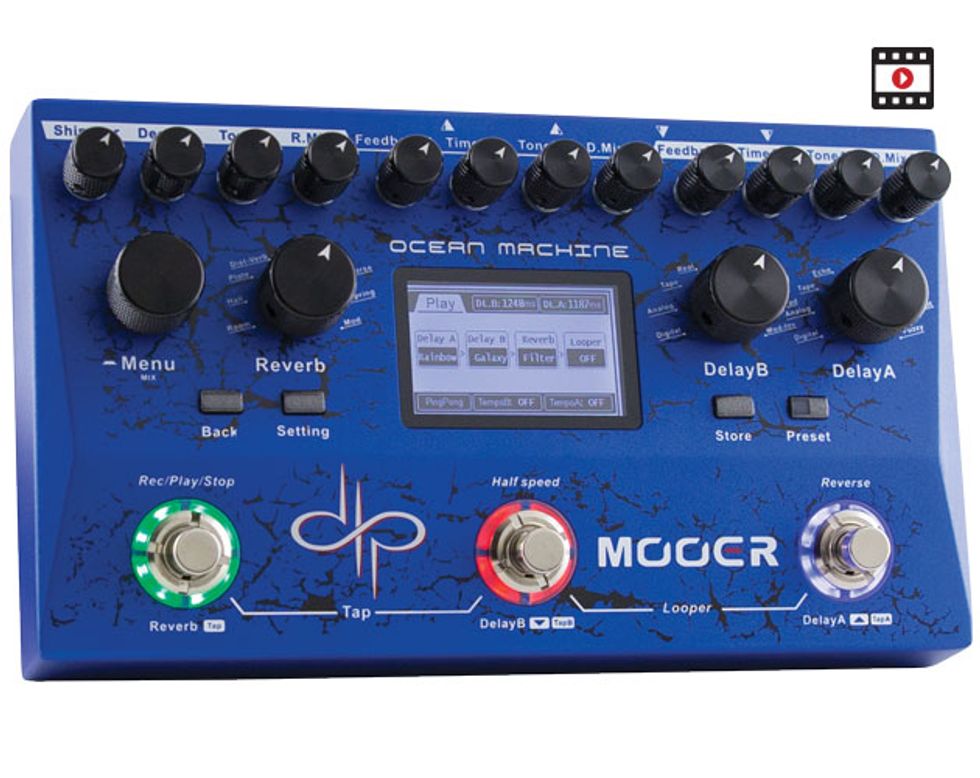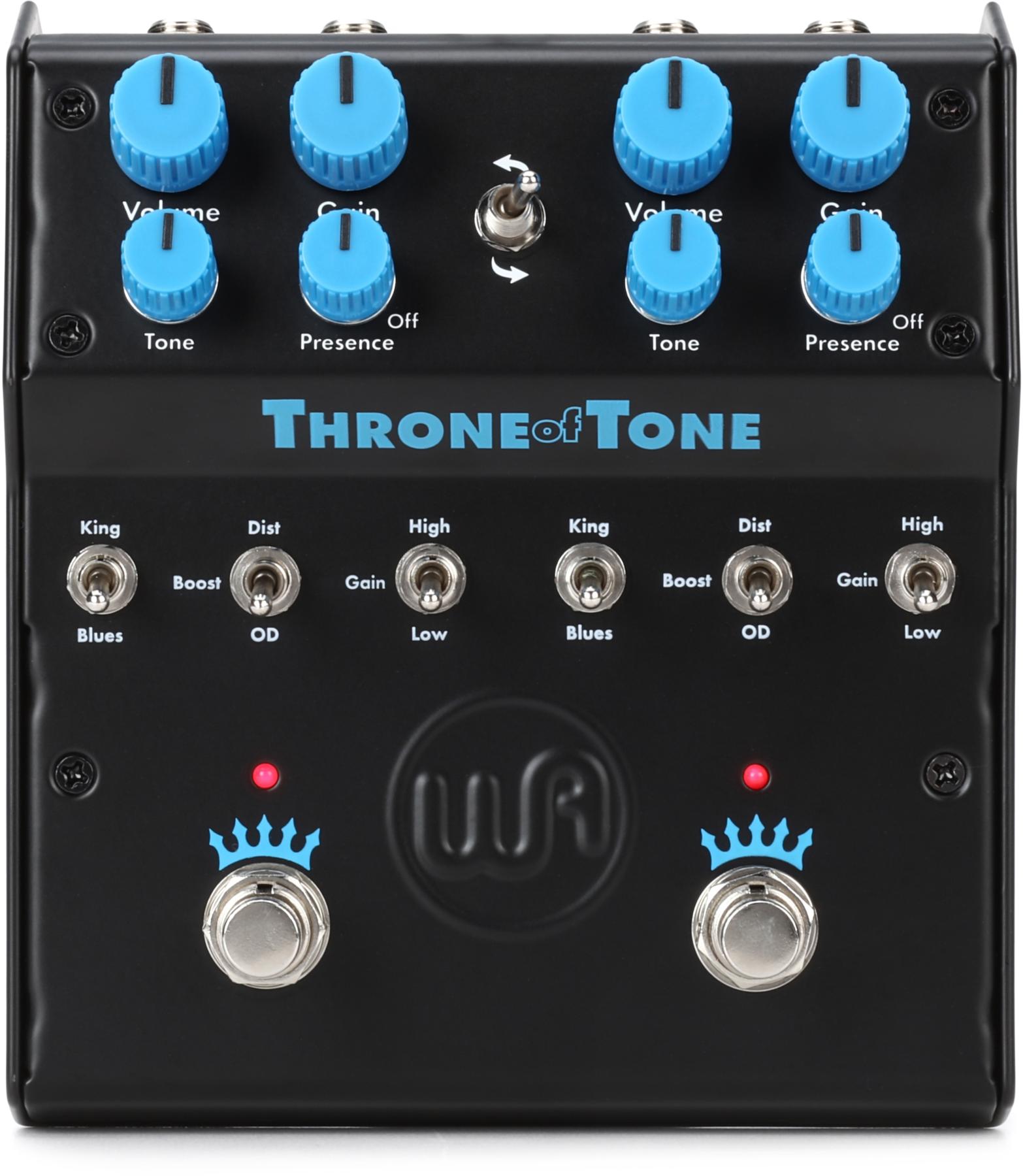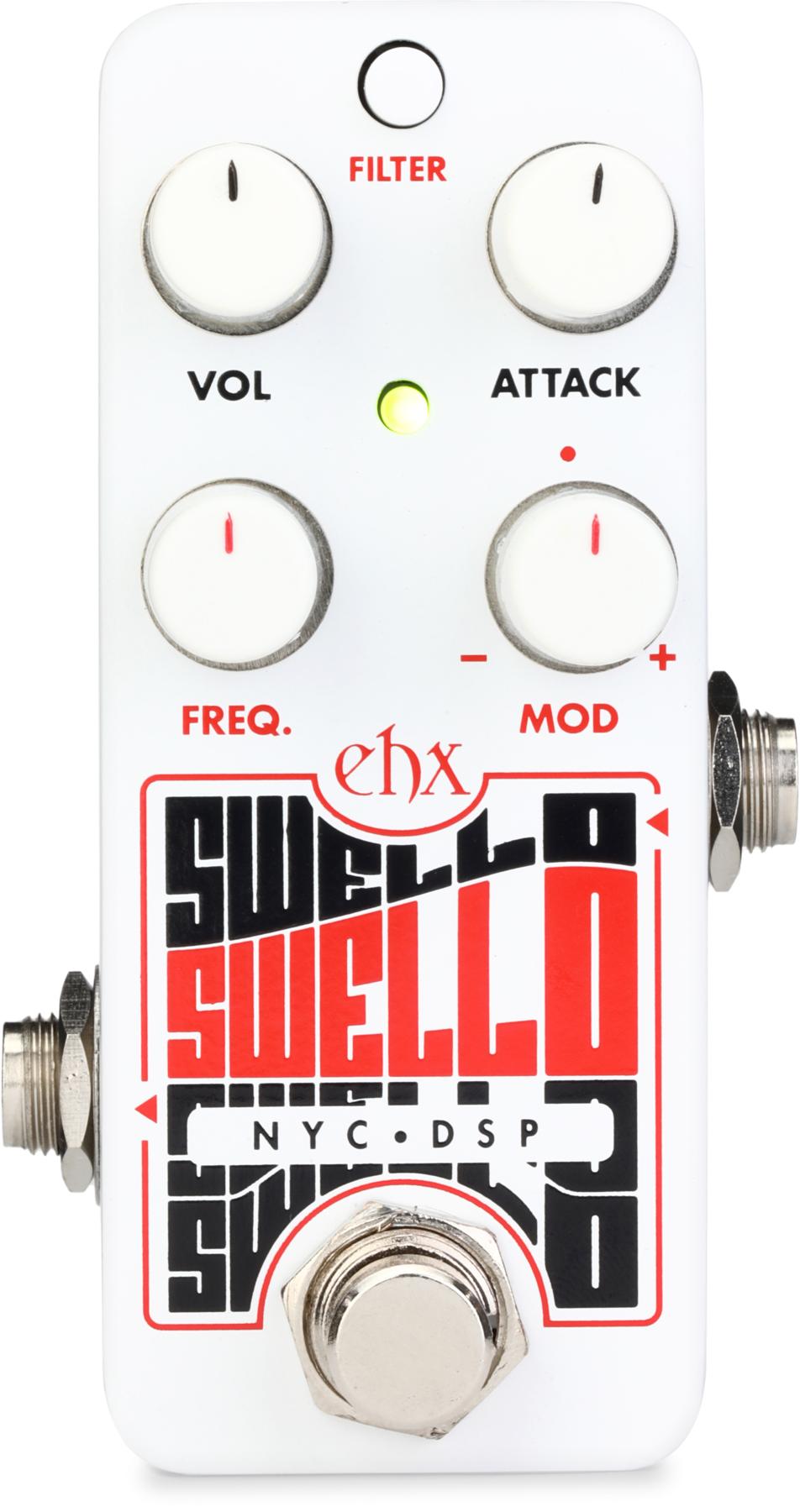A philosophical gear question: Are stompboxes musical instruments?
In one sense, duh—they’re devices that help us make music. But some effects simply get clicked on when you desire a particular color, while others reward practice and creativity with fresh sounds and surprises. Mooer’s Ocean Machine is definitely on the “play me like an instrument!” end of the spectrum.
The Ocean Machine is a collaboration between guitarist/bandleader Devin Townsend and China’s Mooer company. It’s a “four-effects-in-one” box, combining reverb, two independent delays, and a single-channel looper. The effects are digital, but an ambitious control scheme lets you pilot them in a hands-on, analog-like way. And “ocean” is the perfect metaphor for the watery soundscapes you can create and manipulate once you combine the four effects.
sounds almost instinctively.
Sea Major
Mooer has crammed everything into a roughly 8" x 5" x 1.5" enclosure—not small, but quite space-efficient given what Ocean Machine can do. Gear marketers and product reviewers often use variations of the phrase “This one pedal could replace (insert number here) boxes on your pedalboard!” Sometimes it’s true, but rarely more so than here. The effects are genuinely independent, and you can use each one on its own in the conventional ways. But the real fun starts when you layer effects to conjure complex, ever-shifting sound collages.
Because it’s digital, Ocean Machine could have been smaller—but then you wouldn’t have the 16 knobs that give the pedal its tactile, analog-like feel. Nearly all the knobs have a single function, and with practice, you can tweak and mutate sounds almost instinctively. (In a promo video, creator Townsend says he plans to place the pedal on a stand and operate it by hand, which makes all the sense in the world.) The high-quality metal knobs are a nice plus for such a touch-intensive device.

Due to the forest of knobs and their small-print labels, it’s hard to read the control names and effect types in less-than-perfect lighting. But with time, you’ll find your way by feel. Also, there are some tools to help you keep your bearings. And that brings us to Ocean Machine features that aren’t quite so analog-like.
Deep Sea Digital
Ocean Machine has two modes: play and patch. In play mode, the knob settings always reflect what you’re hearing, as on analog pedals. In patch mode, you can save and recall 24 favorite effect combinations and step through them via footswitch. You can still tweak settings on the fly in patch mode, though a knob’s position doesn’t mirror the actual setting until you touch it. However, a small LCD screen clarifies matters by displaying the current reverb and delay settings, looper status, and other helpful info.
Ratings
Pros:
Four ambient digital effects in a compact footprint. Ergonomic analog-style operation. Stores 24 presets. MIDI and realtime control. Musically inspiring.
Cons:
Reverbs and pitch-shifts have pronounced digital artifacts. Hard-to-read control labels. Some learning curve.
Tones:
Ease of Use:
Build/Design:
Value:
Street:
$299
Mooer Ocean Machine
mooeraudio.com
Unlike the fixed-function knobs, the three soft-touch footswitches have multiple jobs, and it may take a while to find your … sea legs. (Sorry.) They toggle the delays and reverbs on and off. They control the transport in loop mode, including half-speed and reverse-playback. The light rings surrounding the switches indicate on/off status, delay speed, loop playback mode, and other info. Press two footswitches simultaneously to activate the looper or tap in delay times. (It’s actually easy to tap two switches at once unless you have very small feet in very pointy shoes.) Also onboard: 5-pin MIDI in and out jacks, and an input jack for a pedal controller (not included), which you can route to varying parameters, and use to store assignments with your patches.
Trial by Transposition
Large single-function knobs select from nine reverb types and 15 delay algorithms. The delays include the usual analog, digital, and tape modes, plus colorful pitch-shifted and bit-crushed variations. There are hundreds of possible combinations. It’s hard to run out of ideas here, especially given the realtime tweakability.
The non-transposed delays sound great, though the pitch-shifted ones reveal digital-sounding graininess and bleating. In fact, Ocean Machine’s weakest link is a DSP engine that’s far from state-of-the-art. Some of the reverbs aren’t terribly realistic, especially the spring simulation with its sore-thumb midrange resonance. And while I dig how you can add octave-up reflections to any reverb sound via a dedicated “shimmer” knob, there are obvious digital artifacts here as well.
Mind you, these relatively lo-res’ digital sounds aren’t necessarily bad tones. They’ve got a uniquely gritty flavor, and the transpositions can be musically appealing, warts and all. Nowadays many stompboxes offer higher-res, more natural-sounding DSP (and not just relatively pricy pedals from the likes of Strymon and Eventide). But superior processors would have jacked up Ocean Machine’s modest $299 price tag. My advice: Listen and decide whether these digital colors might work for you. (The demo clip provides a fair idea of what to expect.)
The Verdict
Ocean Machine is a fun and inspiring digital reverb, looper, and dual delay that you can play like an analog device. It’s well built, space-efficient, and ergonomic. The digital processing quality isn’t all it could be, though it may be all it can be at such a sensible price. The pedal offers a compelling workflow: Create sounds at home and step through your favorites at the gig. And when onstage inspiration strikes, just grab knobs and go ape-crazy. By necessity, there’s a learning curve, but the investment is likelier to inspire than frustrate. Ocean Machine is complex and compelling—like a real musical instrument.
Watch the Review Demo:




























